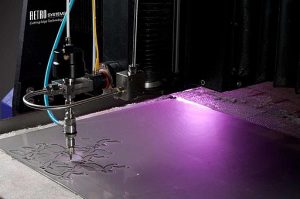When table discussions turn to CNC plasma cutting, cardinal points that are putting the quality of cut into question will inevitably come to surface. A little knowledge about the basic CNC machine troubleshooting steps will significantly help in identifying proper resolution to your cut quality concerns.
Alongside this, making necessary tweaks or refinement to your speed on cutting and cutting heights as well as knowing how to properly adjust your amperage or power levels will prove to be of great help, too.

One of the most talked-about topics in the CNC plasmacam Australia industry is the whole quality. So much discussion about it.
Out-of-round holes or those that come with tapers (the hole top is much bigger at the bottom). This is a common issue in the vast majority of fabricating and machining shops in the country.
Say, for instance, that you need to cut a hole the diameter of which is much smaller compared to that of plate thickness. With this kind of scenario, you might end up with distortion issues and an excess taper.
But with an air plasmacam Australia system in place, you can expect a properly cut round hole (top and bottom). If you are looking for ways to further enhance your hole cut quality, here are some pointers to go by to make it possible.
Determine the Ideal Cut Height to Know Where to Pierce the Plate
It is important to know the manufacturer’s recommendations with regard to pierce delay time. Both parameters would be critical when it comes to alleviating the molten metal blowback amount on the nozzle orifice and torch shield.
If you pierce it too close or move the torch before you even make complete piercing it will just likely create damage to the orifice and if that happens will alter the quality of the cuts.
By finding the right, practical way to control height, you won’t have a hard time in finding the material surface, which will then retract to pierce height, light up the torch, and sustain the pierce height until such time that your pierce delay timer would be cut out.
Following this is the indexing to the cut height so that the X and the Y machine motion would be finding its way via the lead-in cut path.
Make proper adjustments to your Cut Speed.
When it comes to the cutting speed for holes, it should run close to around at least 60 percent of the speed you are having when cutting the outside contours of the part. This will make way for the creation of low-speed dross on the hole’s bottom section, minimizing the taper hole in the process.
Some CAM software applications carry this out automatically on holes but come with a certain diameter requirement. As for other software systems, they sometimes need access to a manipulated G-code to achieve this.
What’s surefire hit is, if you cut too fast, it will run the risk of increasing hole taper.
Ensuring That You are Cutting with the Correct Height
For holes that have a diameter range of fewer than 1.25 inches, disabling the voltage height correction and the arc voltage control is the best action here but will run the risk of enabling the indexing-to-cut height and the pierce height.
Cutting holes at a much slower speed will make the arc voltage control height move the torch at closer proximity to the plate. Once again, there are software and machines that will freeze height automatically on all holes that are less than the determined diameter. But an incorrectly cut height will have increased taper holes.
Take Advantage of Anti-spatter Welding Spray
A torch that is run over a slag pile that was created during piercing can have an impact on the bottom hole roundness. Usually, the spray will eliminate the spatter that is more likely going to appear during piercing. This will minimize the appearance of arc wobble on the holes. Spray only a small amount on the front of the torch to help in keeping the spatter off your nozzle and shield.
Veer away from the use of spatter dips. We suggest that you consider using instead a water-based spray. In the end, you will be caught in surprise to see how simple things can make a world of difference in improving the quality of cut.

